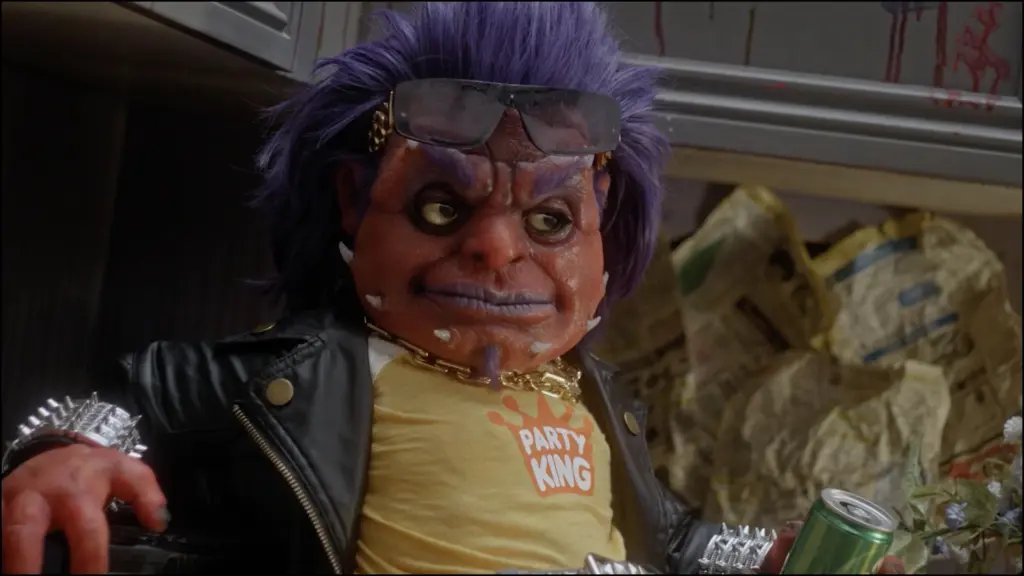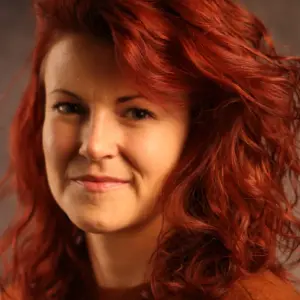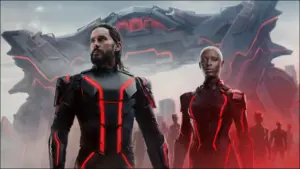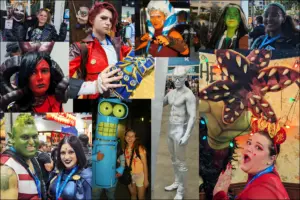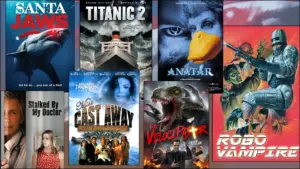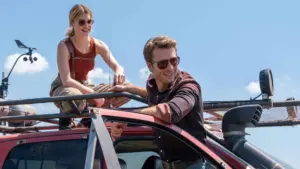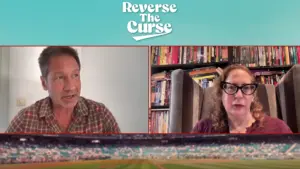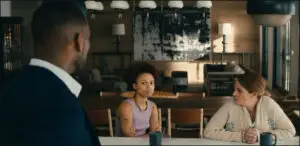In a world overrun with “elevated horror movies,” melodramatic cash grabs and shameless award baiting, it’s refreshing to see a filmmaker like Steven Kostanski harken back to the glory days of zany practical effects gut busters with his latest feature, Frankie Freako.
In the film, workaholic yuppie Conor (Conor Sweeney) finds himself in an existential rut. Seeking inspiration both in his professional life at work, and in his romantic life at home, Conor turns to a bizarre late-night party hotline hosted by a strange dancing goblin who calls himself Frankie Freako. Entranced by the promise of breaking out of his “square” reputation, Conor pauses his channel surfing, takes a deep breath, and punches the freaky number into his phone.
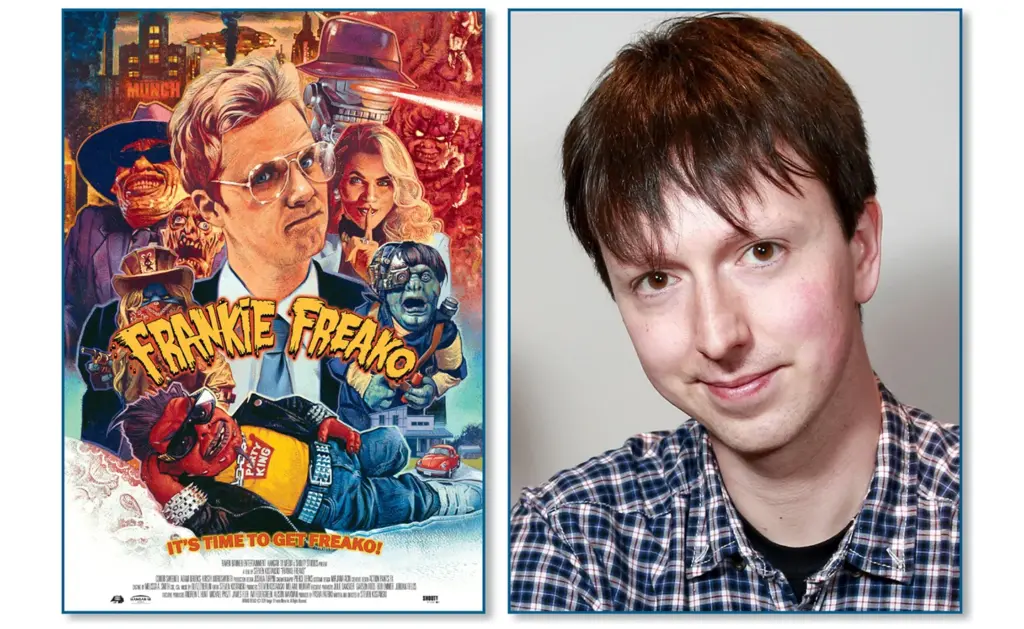
Known for his extensive experience in the practical-effects world, artist Kostanski made a name for himself working on such projects as Crimson Peak, It, Star Trek: Discovery, the Hannibal TV series, and most recently, the popular spin on traditional slasher flicks, In a Violent Nature. Looking to make his mark behind the camera, as well, Kostanski went on to direct a slew of dearly beloved cult classics, including The Void, Manborg, Father’s Day, Leprechaun Returns, segments in V/H/S/94 and ABCs of Death 2, and of course, the festival favorite PG: Psycho Goreman, which with its release garnered an entirely new fan base and myriad pieces of fan art made in honor of the movie’s unique characters.
Hoping to kickstart his own mini-monster franchise in the vein of such gems as Puppet Master and Ghoulies, Kostanski is back in the director’s chair with Frankie Freako, and it’s a wild ride, to say the least. I had the chance to chat with the director during his stint at Fantastic Fest, and as always, it was a thrill catching up.
In the interview, we talk about why he chose to work with puppets as opposed to creating prosthetics and creature suits, what he learned while working with stop motion animation, the excitement he feels in bringing some much-needed levity to the filmmaking scene, helming his own effects company, the joys of 3D printing in the shop, and much more.
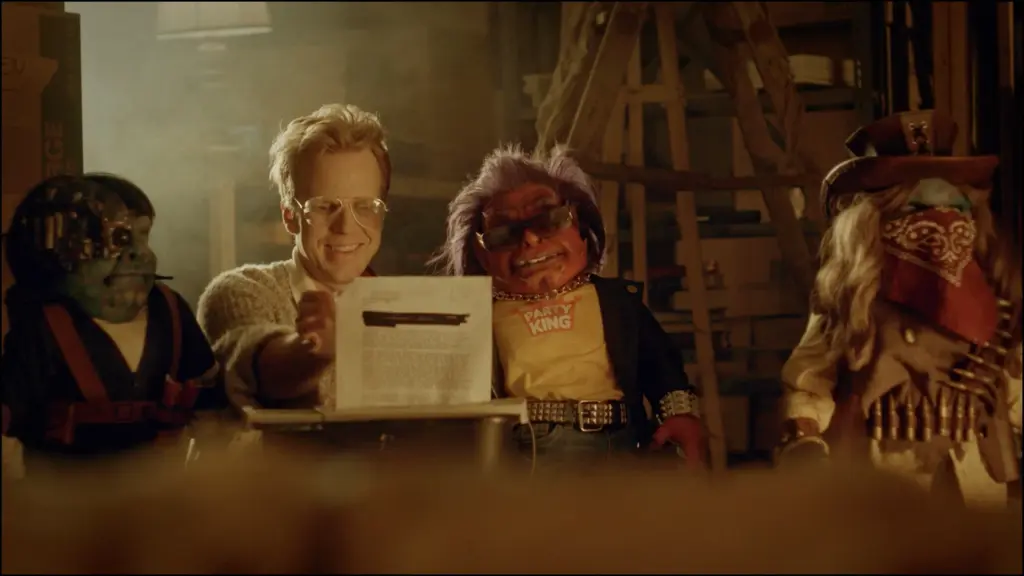
Kalyn Corrigan: This is such a wild, zany film that feels like a throwback to the glory days of Bad Taste and Evil Dead 2. How does your film bring some much needed levity to the filmmaking scene?
Steven Kostanksi: I mean, it’s the symptom of being friends with guys like Adam Brooks and Conor Sweeney and Matt Kennedy, who all definitely had an influence on the tone and the vibe of this movie. They’re the funniest guys I know – my Astron-6 cohorts. This movie really was just an excuse to display Conor’s comedy chops and his acting ability. We were shooting a merch commercial for Psycho Goreman, and it was just him in front of the camera riffing for like three and a half solid minutes. As we were doing that, I remember thinking like, I want to build a whole movie where I can just let him go and do his thing. And ideally, something where I’m tormenting him with creatures. So, that eventually flowed into what became Frankie Freako.
Why use puppets as opposed to actors wearing prosthetics, or masks and costumes, like you did when you directed Psycho Goreman?
Because I thought it would be easier, but it’s not. We did Leprechaun Returns, which obviously is Linden [Porco] in prosthetics. Psycho Goreman was actors in prosthetics. I remember after both of those being like, this is exhausting, this is like a logistical nightmare. You have to process these people, you gotta get them into makeup, they’re in makeup all day, they have to be removed from makeup at the end of the day. It’s a lot of time, it’s a lot of resources, like time and money and energy. I thought, well, with a puppet, you don’t have to do any of that. You can literally just drop it on the ground at the end of the day and walk away. It doesn’t have feelings. You don’t have to pay it a day rate. At least, that was my thinking at the start.
But then, I realized that, oh no, you have to have a puppeteer operating it, and you have to build it and it has to work. It was a case of diving in headfirst, not really knowing what I was getting into and then pivoting and adjusting as things developed. So, it was pretty chaotic, getting this thing made. It was a big learning curve for me. I definitely know things I won’t be doing if I do another puppet movie in the future, but it still was a super fun time. When things were working, and when things were clicking, and when Connor was beating the shit out of a Boink puppet and screaming at it, life doesn’t get any better than that.
I’m very curious about the look of your creatures. They feel reminiscent of cult classics like Critters and Ghoulies, but they’re also unlike anything I’ve seen before. Talk a little bit about the design of your puppets, and your source of inspiration.
I wanted to get away from specifically Ghoulies, Gremlins, Critters, where they’re all – I guess I could call them pencil-less creatures. They don’t have outfits, necessarily. I guess in Ghoulies III, they get little outfits, but everything’s very animalistic. With these guys, I wanted them to feel like little dudes. I want them to be like little people, and half the fun is their cute little wardrobes. So, that was an intentional design choice to make them feel human, even though they’re not human and give them a bit of a different type of personality. I feel like it’s leaning more into Puppet Master than into Ghoulies,where all of those puppets had a very distinct look and distinct personalities. Each puppet feels like it’s from its own movie and they all just got mashed together. I wanted that vibe with this as well, where Frankie, Dottie and Boink all feel like they could go off and have their own adventure, and it would be wildly different from what each other’s worlds would be.
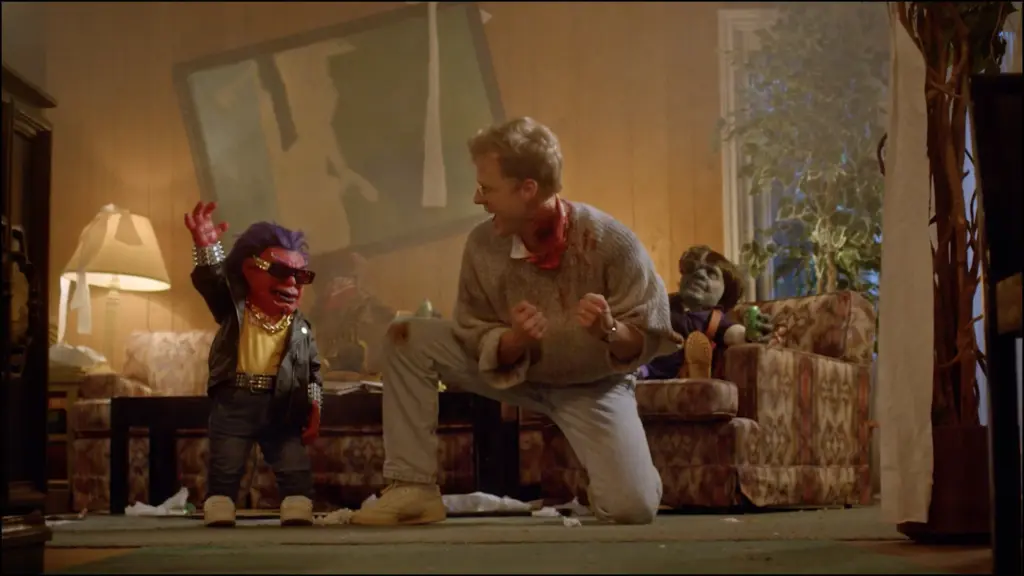
Do you have a personal favorite puppet that you created for the movie?
I mean, Crunch is pretty great. The idea of just a guy that’s perpetually bug-eyed and stressed out entertains me a lot. But I mean, that changes day to day. Some days I love Frankie, some days I love Dottie, some days I love Boink. But they’re all fun.
How did you bring these creatures to life, as far as being on set, making them move, and making them appear human or lifelike?
It was a combination of techniques. There were some animatronics that played, specifically for Frankie, he had some eye blinks and more complex movement, because he was the featured character. But we’d have different heads for each puppet. Some of them would have eye movement and jaw movement. Some of them would just be static. Like those are the ones we’d usually use for any shot, like looking over the shoulder at Conor, it’s all about Conor performance, so we just have these static props propped up in the foreground. It all depends on the situation. We had replaceable upper bodies and lower bodies, that would either have loose arms that could be puppeteered, or they would be rigid armature, so they could be in a static position, or holding on to something. We tried to design and advance everything to be able to accommodate every situation.
I learned after the fact that in this type of movie, you usually build a puppet for every scenario. On a Gremlins set, or something like that, they would have the time and the resources to make a Gremlin that does the specific thing for a scene. Like, it will pick up a glass and chuck it or something. Everything about it is about that one gag. But on a super low budget thing like this, it was like, well, we have to accommodate every situation. That was our design logic, and it worked out sometimes.
The effects in this film are credited to “Action Pants FX,” is this your new FX house? When was this created?
I mean, that’s the shop I’m in right now. Yeah, that’s my shop that I’ve been doing builds for shows in for the past few years. We did Frankie Freako, did the build for Deathstalker. I also did Scared Shitless. We’re working on a TV series called Revival right now. So yeah, we’ve got a lot of projects happening here. It’s like a small boutique shop, mainly to accommodate my projects, because I just needed space to build all of these things. That’s how it came about.
Did you get to invent anything new while working on this?
There was stuff that was new to me, but not new to the industry. I find a lot of my process is me not doing my research and just trying to figure it out in the moment, and then learning after the fact that there was a way straighter line to solve that problem than what I did. For me, there were some stop motion techniques I did on this that were new to me. I’d never had a moving camera in stop motion before, but I actually built a little dolly rig that could be moved incrementally. For people who do stop motion for a living, that’s nothing new, but for me, that was a big deal. That was the big innovative technique, in terms of what I was doing on this project.
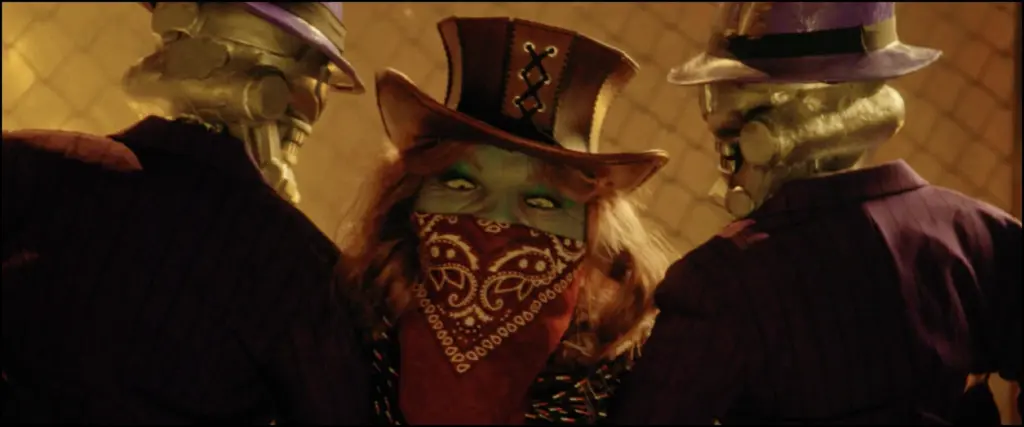
I thought there was some stop motion animation, but I wasn’t sure. It’s very effective.
Yeah, that whole chase sequence at the end is all miniatures and stop motion actually, like 3D printed. I scanned all of the puppets and then 3D printed tiny little versions of them to fit into this mine cart. So, that was super fun. This actually was my first time utilizing a lot of 3D printing for stuff. We printed a lot of components for this. It’s a very exciting technology that I’m totally in love with now.
Yeah, that’s awesome. I love to watch the machine as while it prints things out. It’s very fun.
Yeah, super fun. It’s like you leave it to print overnight, and you come back the next day and it’s like Christmas. You get a little little treat waiting for you to get taken off the bed. It’s cool.
You’re writing, directing, editing, doing effects – What’s it like wearing so many hats while making a movie? You’ve obviously had some practice with Psycho Goreman and The Void, but does it get any easier?
No, it doesn’t. I’m tired. I want to go to sleep. That’s my answer. It’s a lot. It’s too much and it needs to slow down at some point. At this point, I’m just looking forward to Christmas, because I feel like I’m going to at least get a few days to sleep. So, yeah, it’s a lot to take on, but I love what I do, so I can’t stop.
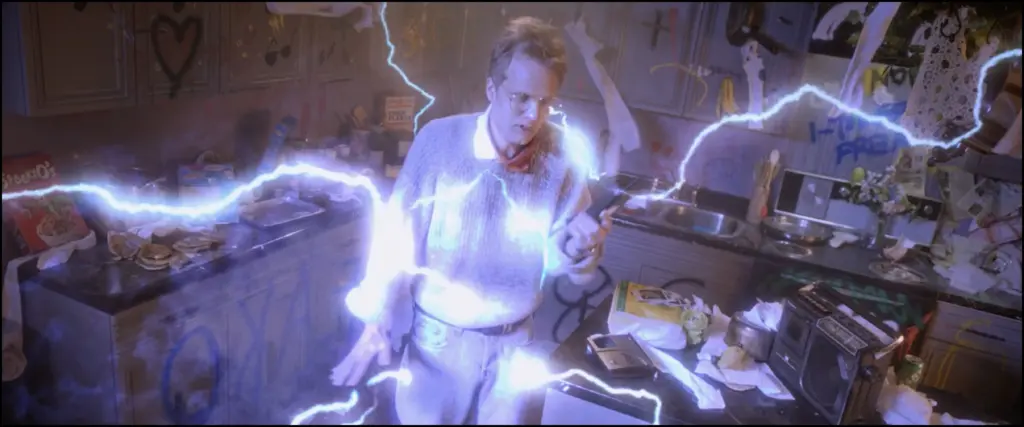
You’ve got Conor Sweeney as your leading man, who you’ve worked with before on films like Father’s Day, The Editor and Manborg. Aside from a few brief moments with other human characters, this is mostly a movie starring Conor and a slew of puppets. How challenging was it for your lead to act against mostly inanimate objects, and how much of a challenge was it for you to direct puppets?
I mean, we had a real Sam Raimi – Bruce Campbell relationship in this movie, where I felt like I was just tormenting him the whole time and getting a lot of joy out of it. But we had a very fun dynamic on the project.
I mean, the movie’s definitely a Conor Sweeney movie. He’s the star, he’s in like every other shot. It was fun to give him that opportunity as well, because I feel like he’s always played a secondary character in a lot of Astron-6 stuff. To make him the lead was exciting, and we had a lot of fun jamming on the comedy of this movie. There’s a lot of weird moments that are 100% him. A lot of the jokes, I think he deserves all the credit for. Any weird pop culture references to Gary Busey or Dan Ackroyd that are made, that’s all him. So yeah, it was super fun.
When we were cooking on set, it just doesn’t get any better. But I can also confirm that he hated acting against puppets. At least, the way we shot it was kind of unconventional. We shot all the actor stuff first, over three weeks, and that would include any reactions or overs on looking at Conor. So, it would be a shot of Conor with a puppet in the foreground, and we’d use the inanimate stand-ins for that. Connor would be trying to act out a whole scene against a puppet that was not doing anything, that was just sitting there static. He’s expressed this to me multiple times, that it was super tough bringing all the energy, because it’s your face on camera, so he has to deliver. It’s like bringing his energy, and the energy to sell that he’s bouncing off of somebody else. He’s doing extra work to make the scene convincing because of the way we structured it.
I know it was tough, but I think, again, now that we’ve done it, we have a system down. I think it would be easier on everybody if we did this again, now that we’ve hit all the pie bowls while doing it the first time.

